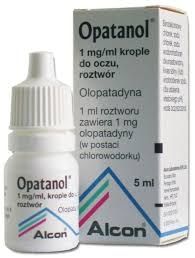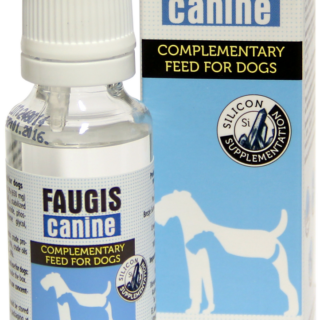Learn how to – Red Hat OpenShift 4 New Features.
Introduction
The titles at Red Hat just a few days ago went like, “Red Hat Redefines Enterprise Kubernetes Through Full Stack Automation with Red Hat OpenShift 4.” Red Hat OpenShift 4, the next generation of its trusted enterprise Kubernetes platform, re-engineered to address the complex realities of container orchestration in production systems.

OpenShift 4 is designed to deliver a cloud-like experience across the hybrid cloud by driving automated updates across Kubernetes deployments everywhere. OpenShift 4 brings a new ray of light in the container space due to the numerous advancements done on the platform. (source: www.redhat.com, 2019). The following are some of the amazing stuff done on the platform:
OpenShift Courses:
Practical OpenShift for Developers – New Course 2021
Ultimate Openshift (2021) Bootcamp by School of Devops
OpenShift is now a Trusted enterprise Kubernetes
Red Hat OpenShift Container Platform is certified, conformant Kubernetes, as validated by the Cloud Native Computing Foundation (CNCF). At the moment, it is the only enterprise Kubernetes offering built on the backbone of the world’s leading enterprise Linux platform. Moreover it is backed by the open source expertise, compatible ecosystem, and leadership of Red Hat (source: www.redhat.com, 2019).
OperatorHub embedded on OpenShift 4
With an operator framework and related components, developers and administrators are empowered to automate and orchestrate complex tasks required to maintain an application across any cloud where Kubernetes runs (source: www.redhat.com, 2019).
Affording Developers with the power to innovate easily
As documented by the team at Red Hat, OpenShift 4 supports the evolving needs of application development. It serves as a consistent platform to optimize developer productivity with the follwing (www.redhat.com, 2019):
- Red Hat CodeReady Workspaces. This includes the tools and dependencies needed to code, build, test, run, and debug containerized applications in a web-based IDE. No need to install IDEs or run containers on your laptop anymore.
- OpenShift Service Mesh. This feature combines Istio, Jaeger (for tracing), and Kiali (for visualization) projects as a single capability. This makes it easy to manage and trace your microservices deployments.
- Operator-enabled application environments on OpenShift with Red Hat Middleware. This enables IT organizations to unify their development environments around Operator capabilities. In the process enabling developers to focus on delivering next-generation apps without having to worry about maintainance of tools.
- KEDA (Kubernetes-based event-driven autoscaling). This is a collaboration between Microsoft and Red Hat. It supports deployment of serverless event-driven containers on Kubernetes, enabling Azure Functions in OpenShift, in Developer Preview.
- Operator-enabled Red Hat OpenShift Container Storage 4,
Kubernetes at the Core with Full Stack Automation
OpenShift 4 is Kubernetes at its core and in this release they have completely re-architected how to install, upgrade and manage the platform. There is advanced day 2 management and automation to the application services that run on the platform. Some of the Automation details include (www.redhat.com, 2019):
- Self-managing platform for hybrid cloud to provide a cloud-like experience via automatic software updates and lifecycle management. This happens across the hybrid cloud, powered by the trusted foundation of Red Hat Enterprise Linux and Red Hat Enterprise Linux CoreOS.
- Adaptability and heterogeneous support, available in coming months across major public cloud vendors. Such as Alibaba, Amazon Web Services (AWS), Google Cloud, IBM Cloud, Microsoft Azure. This ancludes private cloud technologies like OpenStack, virtualization platforms and bare-metal servers.
- Get started with enterprise Kubernetes easily using streamlined full stack installation with an automated process.
- Simplified application deployments and lifecycle management with Kubernetes Operators.
A new and simplified installer.
OpenShift 4 uses Kubernetes itself to provision and scale your Kubernetes clusters, leveraging the new OpenShift installer.
An enhanced OpenShift Container Platform web console.
OpenShift 4 comes with improved web console for Administrators and Developers. You will be able to perform most operation tasks from the web console.
An immutable infrastructure with Red Hat CoreOS.
Red Hat Inc. acquired CoreOS a while back. This minimal operating system optimized for containers is provides the foundation for Red Hat OpenShift Container Platform.
Auto-scaling compute nodes.
The auto-scaler in OpenShift Container Platform repeatedly checks to see how many pods are pending node allocation. If pods are pending allocation and the auto-scaler has not met its maximum capacity, then new nodes are continuously provisioned to accommodate the current demand.
When demand drops and fewer nodes are required, the auto-scaler removes unused nodes. After you install the auto-scaler, its behavior is automatic. You only need to add the desired number of replicas to the deployment.
There so much more in store for you. Just follow the following links to get more updates and news concerning the brand new OpenShift 4. Thank you for reading through..
https://blog.openshift.com/introducing-red-hat-openshift-4/
Also Read:
How to run Local Openshift Cluster with Minishift
How to Setup OpenShift Origin (OKD) on Ubuntu
Best Storage Solutions for Kubernetes & Docker Containers
Best Terminal File Managers for Linux
Vuls – Best Vulnerability Scanner for Linux / FreeBSD / WordPress / Network





















Leave a Reply
You must be logged in to post a comment.